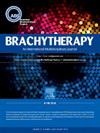NorCal近距离治疗废物审计:一个简单的,有效的,工具包,临床医生领导的废物减少。
IF 1.7
4区 医学
Q4 ONCOLOGY
引用次数: 0
摘要
目的:医疗保健系统是资源密集型的,存在许多减少医疗浪费的机会。执行固有资源密集型程序的近距离治疗师已经准备好启动向可持续,气候智能护理的过渡。作者开发了一个基于质量改进(QI)的北加州近距离治疗废物审计工具包,以指导近距离治疗过程中医疗废物的减少,并提供气候健康教育。方法和材料:通过在2021年至2023年期间在两家邻近医院进行的近距离治疗废物审计,验证了NorCal近距离治疗废物审计工具包。废物被分为生物有害废物、非生物有害废物和麻醉废物,并在每个程序后由未参与近距离治疗案例的审核员使用标准模板进行称重和分类。研究结果分析了产生废物的主要驱动因素,并选择了影响较大的干预措施。结果:审核后的结果表明,生物危险废物减少了50%以上,消除了90%以上的不适当的生物危险废物分类,节省了成本(4.22美元/公斤),减少了20%以上的垃圾填埋。该工具包在网上公开,在18个月的时间里,来自7个国家21个医疗保健组织的34名不同个人访问了该工具包,并导致了包括放射肿瘤学、急诊医学和儿科在内的多个专业的减少废物项目。结论:基于qi的NorCal近距离放射治疗废物审计工具包可以帮助放射肿瘤学家和放射肿瘤学以外的医疗团队减少废物,并为环境可持续的医疗保健做出贡献。本文章由计算机程序翻译,如有差异,请以英文原文为准。
The NorCal brachytherapy waste audit: A simple, validated, toolkit for clinician led waste reduction
PURPOSE
The healthcare system is resource intensive, and many opportunities exist to reduce medical waste. Brachytherapists performing inherently resource intensive procedures are well poised to initiate the transition to sustainable, climate-smart care. The authors developed a quality improvement-based (QI) NorCal Brachytherapy Waste Audit Toolkit to guide medical waste reduction in brachytherapy procedures and provide climate health education.
METHODS AND MATERIALS
The NorCal Brachytherapy Waste Audit Toolkit was validated through brachytherapy waste audits conducted at 2 neighboring hospitals between 2021 and 2023. Waste was categorized into biohazardous waste, nonbiohazardous waste, and anesthesia waste and was weighed and cataloged after each procedure using a standard template by auditors not involved in the brachytherapy case. Findings were analyzed for key drivers of waste production and high impact interventions were selected.
RESULTS
Postaudit results demonstrate biohazardous waste reduction of greater than 50%, elimination of over 90% improper biohazardous waste sorting, cost savings ($4.22/kg) and a reduction in landfill waste by over 20%. The Toolkit was made public online and over 18 months, was accessed by 34 distinct individuals from 21 healthcare organizations across 7 countries and led to waste reduction projects in multiple specialties including radiation oncology, emergency medicine, and pediatrics.
CONCLUSION
A QI-based NorCal Brachytherapy Waste Audit Toolkit may help radiation oncologists and healthcare teams beyond radiation oncology reduce waste and contribute toward environmentally sustainable healthcare.
求助全文
通过发布文献求助,成功后即可免费获取论文全文。
去求助
来源期刊

Brachytherapy
医学-核医学
CiteScore
3.40
自引率
21.10%
发文量
119
审稿时长
9.1 weeks
期刊介绍:
Brachytherapy is an international and multidisciplinary journal that publishes original peer-reviewed articles and selected reviews on the techniques and clinical applications of interstitial and intracavitary radiation in the management of cancers. Laboratory and experimental research relevant to clinical practice is also included. Related disciplines include medical physics, medical oncology, and radiation oncology and radiology. Brachytherapy publishes technical advances, original articles, reviews, and point/counterpoint on controversial issues. Original articles that address any aspect of brachytherapy are invited. Letters to the Editor-in-Chief are encouraged.
 求助内容:
求助内容: 应助结果提醒方式:
应助结果提醒方式:


